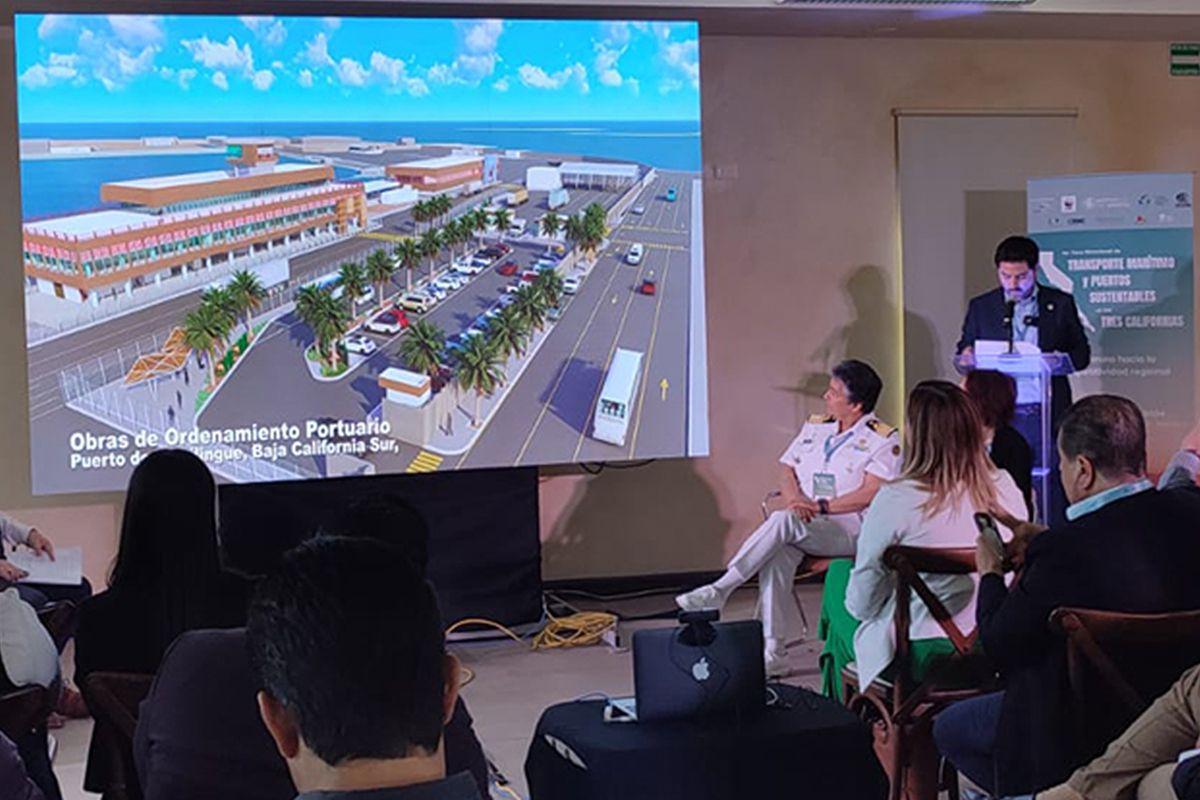With a view to reducing Greenhouse Gases (GHGs) in the maritime sector, local and international civil society organizations, public and private organizations commented on the potential of a green corridor connecting the ports of Baja California, Baja California Sur and California, within the framework of the first Binational Forum on Sustainable Transportation and Seaports in the Three Californias, organized in La Paz.
A green corridor is one that connects two or more green or sustainable ports, that is, those that implement environmentally responsible practices and technologies to minimize their impact on the oceans and reduce their carbon footprint. To this end, they establish strategies for waste management, energy consumption, water quality and conservation of marine biodiversity.
Mexico is committed to reducing GHG emissions by 50% by 2050 and maritime activities represent 2.9% of national GHG emissions, according to the study The Energy Transition of Maritime Transport: Strategic Opportunities in Mexico by the Global Maritime Forum.
To meet this goal, it is essential to transition to the adoption of fuels with zero carbon emissions, according to Jorge Durán, head of the Secretariat of the Inter-American Committee on Ports (CIP) belonging to the Organization of American States (OAS).
Integration of La Paz into the green corridor
The above-mentioned green corridor could connect La Paz, Baja California Sur, with the port of Ensenada, which is the most important mixed port (passengers and merchandise) in Mexico, according to its general director, Manuel Gutierrez, and to the port of Los Angeles, California.
Pacific ports integrated into the National Port System transported 127 million 492,945 tons of cargo through ships in 2023.

In order to prepare Baja California Sur for these new trends in sustainable ports and green corridors, Narciso Agúndez, general director of the port of La Paz, presented the project to modernize the port of Pichilingue.
“Faced with these challenges, we are building a comprehensive and effective port administration that navigates with a vision of the future towards sustainable ports with the modernization of port infrastructure, social welfare works and technologies to reduce environmental impact,” said Agúndez.
These modernization works consist mainly of improving the logistics of shipment, disembarkation and the installation of lighting systems with LED technology and in some cases with luminaires with solar panels.
They also include the implementation of a greenhouse gas inventory in all ports and the development of an emissions reduction plan that adds to the efforts of Mexican ports in the medium term.
At the same forum, Agúndez presented a video where he plans to transfer commercial activity from the Port of Pichilingue to the Port of San Juan de la Costa, so that the first one is dedicated only to tourist purposes.
“We are studying the viability of an industrial commercial port in San Juan de la Costa that, due to its strategic location and natural conditions, allows the arrival of deep-draft vessels, which, together with the northern bypass project, will be linked to the northern and southern exits of La Paz, reducing fuel consumption and the emission of GHGs, allowing the development of Pichilingue's tourist vocation,” the video explained.
Future implementation challenges
The Forum addressed the challenges in carrying out these projects, including the need for investment to deploy necessary infrastructure in ports and projects for the production of renewable energies such as green hydrogen, which is the most ideal for the maritime sector.
Problems such as the lack of inventories of emissions in ports, a fundamental axis for taking action, were also addressed, said Paulina Ortega, Technical Coordinator at the Center for Renewable Energy and Environmental Quality (Cerca).
The forum organized by the alliance of organizations WWF Mexico, Institute of Americas and the Mexican Chamber of the Maritime Transport Industry (Cameintram) highlighted Mexico's potential to generate and supply green fuels and, on the other hand, the need to provide incentives and strengthen the regulatory framework to provide greater certainty to those who invest in this type of project.
Finally, strategies to shorten supply chains known as nearshoring were addressed and the risks of moving these large industries to territories that may not have the resources and infrastructure to receive them were warned.



Comentarios (0)